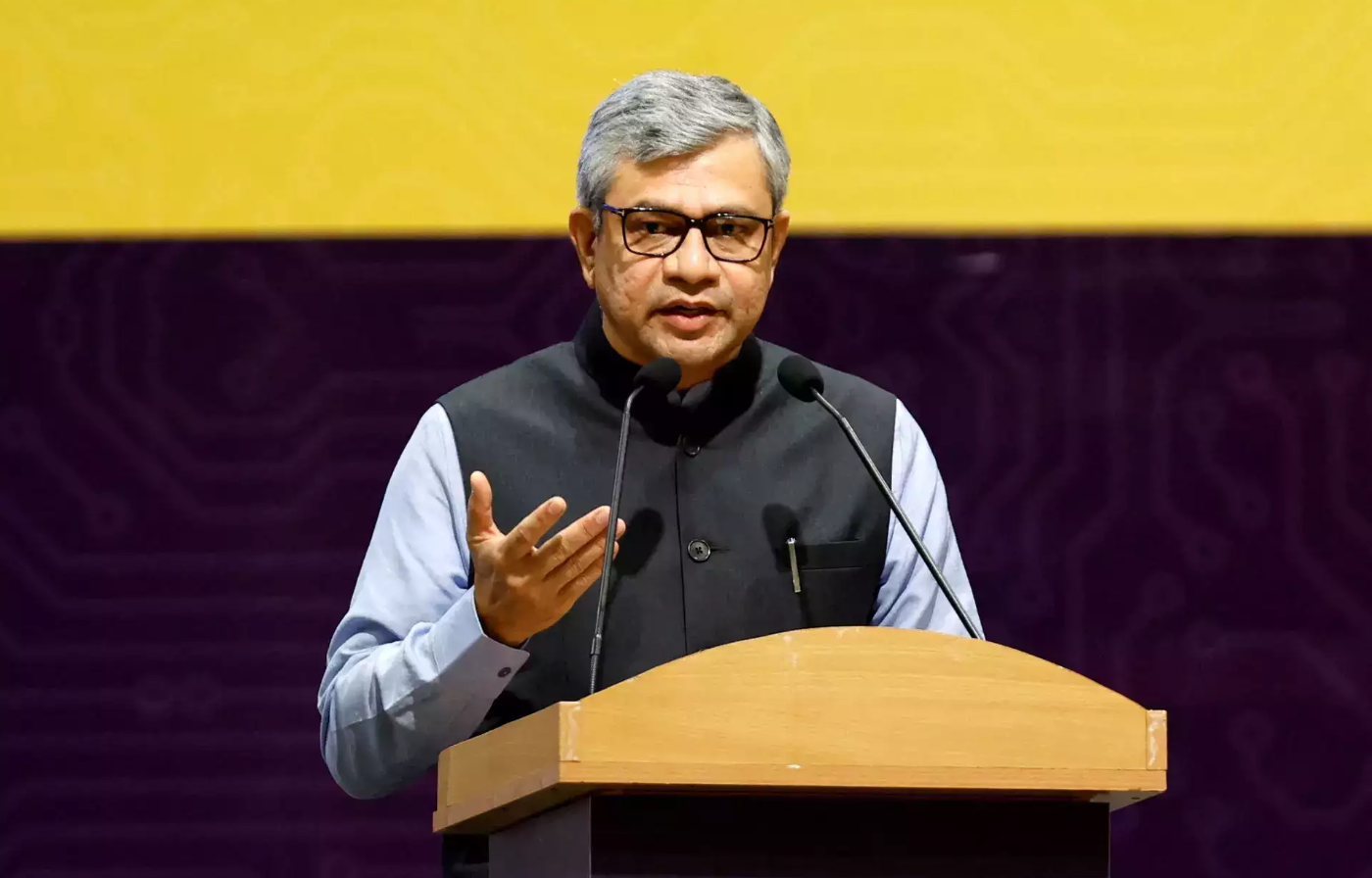Highlights
- India plans to launch its own mobile handset brand, leveraging its manufacturing success.
- Minister Ashwini Vaishnaw announces the separation of telecom hardware and software for innovation.
- The Bharat 6G Alliance aims to position India as a leader in next-gen telecom technologies.
- India’s semiconductor mission to establish fabrication facilities and lead in specific product categories.
In a significant announcement that promises to reshape India’s position in the global mobile technology landscape, Ashwini Vaishnaw, the Minister of Communications, has unveiled plans to develop a homegrown mobile handset brand.
Speaking at the launch of the Indus Appstore on February 21, Vaishnaw outlined a vision that extends beyond the country’s existing prowess in mobile manufacturing, aiming to bring a comprehensive handset ecosystem within India.
“Our initial success of having large-scale mobile manufacturing has given us very good learning, it has given the industry a lot of confidence, it has given the impetus to the ecosystem partners to come to India,” Vaishnaw remarked.
This ambition is not just about assembling devices but nurturing an entire ecosystem that includes software, design, and innovation, setting the stage for a transformative era in telecom technology.
“We will work on developing our own Indian handset brand. We will work on creating the entire handset ecosystem in the country. Our initial success of having large scale mobile manufacturing has given us very good learning.
“It has given the industry a lot of confidence. It has given the impetus to the ecosystem partners to come to India. That will be the journey in the next five years,” Vaishnaw said.
Revolutionising Telecom and Semiconductor Landscapes

Vaishnaw’s discourse went beyond mobile handsets, touching upon seismic shifts anticipated in telecom technology over the next five years, primarily through the decoupling of telecom software and hardware.
“Pretty much like what happened in IT [information technology] hardware, pretty much like what happened in mobile phone, [a] similar thing is happening in telecom technology, so that is where we have the option to take a lead,” he explained.
This strategy aligns with a bigger goal of India to not just catch up but lead in the next wave of telecom innovation, including the pivotal move towards 6G technology.
The Bharat 6G Alliance, launched in July last year, is more than enough proof of India’s commitment to being at the forefront of next-generation telecom technology.
By rallying domestic industry, academia, and research institutions, the alliance aims to spearhead innovation and research in 6G and other cutting-edge technologies.
Charting a New Course in Semiconductor Development

The journey extends into the semiconductor domain, where India aims to transition from a design back office to a hub of product development and innovation.
“Within the design space, India is looking at ways to switch from being a back office to being a product development ecosystem,” Vaishnaw stated.
This transition is crucial for India to play a significant role in the global semiconductor supply chain, marked by the construction of the Micron plant and the anticipation of more such facilities.
However, challenges loom large, as seen in the hurdles faced by the semiconductor program, including the withdrawal of Foxconn from a joint venture and the struggles of other applicants to meet the government’s standards.
Despite these setbacks, Vaishnaw remains optimistic, envisioning the establishment of high-volume fabrication facilities and achieving leadership in at least one product category within the next five years.
Envisioning a Tech-Forward India

The broader vision for India’s digital economy encompasses the development of 10-12 key technologies in a spirit of public-private partnership, reminiscent of the successful models of the telecom and digital stacks.
“The way we have developed the telecom stack, the way we have developed the digital stack, in exactly same spirit which will be a spirit of public-private partnership, we will be developing a series of technologies which holds good for the country and which can then be exported also,” Vaishnaw articulated.
FAQs
What is India’s plan for its mobile handset industry?
India aims to develop its own mobile handset brand, building upon its extensive experience in mobile manufacturing.
This initiative is led by the Minister of Communications, Ashwini Vaishnaw, who believes it will enhance the country’s technological ecosystem.
How will telecom technology change in India over the next five years?
According to Minister Ashwini Vaishnaw, the next five years will see significant disruptions in telecom technology in India, particularly through the decoupling of hardware and software. This strategy is expected to foster innovation and leadership in the global telecom sector.
What role will the Bharat 6G Alliance play in telecom innovation?
The Bharat 6G Alliance, initiated by the Indian government, aims to catalyze collaboration among domestic industry, academia, and research institutions. Its goal is to spearhead research and innovation in 6G technology, positioning India as a pioneer in future telecom advancements.
How is India advancing in the semiconductor industry?
India is actively working to transition from a semiconductor design hub to a comprehensive ecosystem encompassing fabrication and product development. The establishment of fabrication facilities, like the Micron plant, is a step towards India becoming a significant player in the global semiconductor supply chain.
What are India’s broader goals for its digital economy?
The government plans to develop and export a series of technologies, following the successful models of its telecom and digital stacks. This effort aims to make India a global technology leader, with a focus on public-private partnerships to drive innovation and development.
Also Read: India’s Telecom Sector to Embrace Digital SIM Verification At The Start of Next Year
Also Read: Telecom Trends Expected in 2023 – Jio and Airtel 5G Plans, BSNL 4G and More
